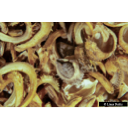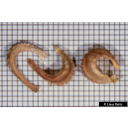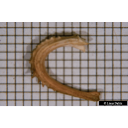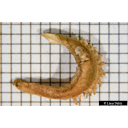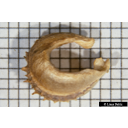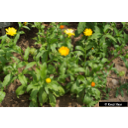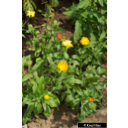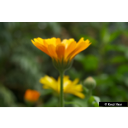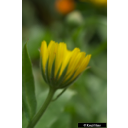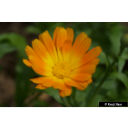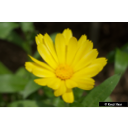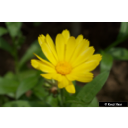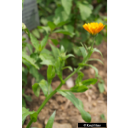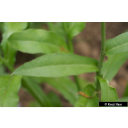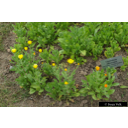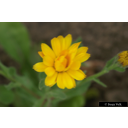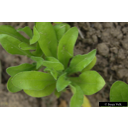Useful information about the taxon (species, subspecies, variety...)
Calendula officinalis L. 1753
Asteraceae (Compositae)
(APG IV)Taxon concept: Global Compositae Database (TICA)
Calendula officinalis L. - Accepted: Calendula officinalis L. bei Zander 2008; Familie: Asteraceae (Compositae) (Zander 2008)Calendula officinalis L. - Accepted: Calendula officinalis L. bei The Plant List (2010); Familie: Asteraceae (Compositae) (APG III)Calendula officinalis L. - Accepted: Calendula officinalis L. bei The Plant List (2014), version 1.1; Familie: Asteraceae (Compositae) (APG III)Calendula officinalis L. - Accepted: Calendula officinalis L. bei The Plant List (2010); Familie: Asteraceae (Compositae) (APG IV)Calendula officinalis L. - Accepted: Calendula officinalis L. bei The Plant List (2014), version 1.1; Familie: Asteraceae (Compositae) (APG IV)Calendula officinalis L. - Accepted: Calendula officinalis L. bei BfN Checklist Flora DE; Familie: Asteraceae (Compositae) (APG IV)Calendula officinalis L. - Accepted: Calendula officinalis L. bei World Flora Online - APG IV (Angiosperms); Familie: Asteraceae (Compositae) (World Flora Online - APG IV (Angiosperms))
- Life form
- herbaceous, terrrestrial, annual
Breunig, T. et al. (2021): Rote Liste der Farn- und Blütenpflanzen Baden-Württembergs.; Erhardt, W., Götz, E., Bödeker, N. & Seybold, S. (2008): Der große Zander. Enzyklopädie der Pflanzennamen. Band 2. Arten und Sorten. Eugen Ulmer KG, Stuttgart (Hohenheim), 18. Aufl., 2103 S.; Haider, M. et al. (2005): Wildbienenkataster. See: https://www.wildbienen-kataster.de; Kew Gardens and Collaborators (2017): Plants of the World Online. see: plantsoftheworldonline.org.; Pritsch, Günter et al. (1985): Bienenweide.. Neumann-Neudamm, Melsungen; Pritsch, Günter et al. (2007): 200 Trachtpflanzen erkennen und bewerten.. Kosmos, Stuttgart; Schick, B. & Spürgin, A. (1997): Die Bienenweide. Eugen Ulmer Verlag, Stuttgart, Auflage: 4., völlig neubearb. u. erw. A., 216 S. 978-3800174188.; The International Plant Names Index (2009). Published on the Internet http://www.ipni.org; Courtesy to IPNI, 2009. Exported from IPNI at date: 2009-09-22 20:17:51; Westrich, P. et al. (2018): Die Wildbienen Deutschlands.. Ulmer Verlag ISBN 978-8186-0123-2.;
Diese Webseite verwendet Google Maps, um Karten und Standorte von Pflanzen in den Hohenheimer Gärten anzuzeigen. Dadurch werden unter Umständen Daten an Google weitergeleitet, was mit einer Verarbeitung Ihrer personenbezogenen Daten verbunden sein kann. Die Datenschutzerklärung von Google finden Sie hier: Datenschutzerklärung von Google
| Sex | Standort | Accession number | Planting year | Donation | IPEN | Lat. | Long. |
|---|---|---|---|---|---|---|---|
| Hauterkrankungen | HvB-753 | XX-0-HOH-HvB-753 | 48,70896944 | 9,2121612 | |||
| Störungen des vegetativen Nervensystems | HvB-753 | XX-0-HOH-HvB-753 | 48,70894162 | 9,2121301 | |||
| Innere Erkrankungen | HvB-753 | XX-0-HOH-HvB-753 | 48,70892046 | 9,21209332 | |||
| Diverse Krankheiten | HvB-753 | XX-0-HOH-HvB-753 | 48,70900497 | 9,21205428 | |||
| Ätherische Öle und Harze / Terpenoide | Marz-753 | XX-0-HOH-Marz-753 | 48,70929182 | 9,2117215 | |||
| Pflanzenquartiere für Studenten | StudGart-788 | XX-0-HOH-StudGart-788 | 48,70931283 | 9,21212677 | |||
| Asteraceae | SYS-18951 | 2022-04-21 | XX-0-HOH-SYS-18951 | 0 | 0 |

